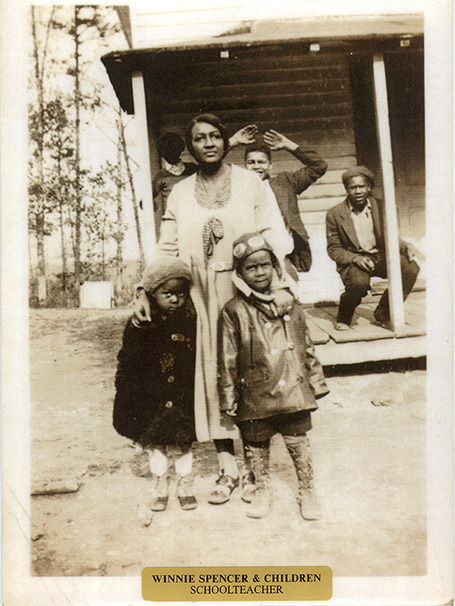Sustaining Their Community: Development of the Schoolhouse and Church
The Jaspers and several other families embraced their agency in these new communities but saw that they were still being left behind by Fairfax county institutions. In 1881, the Jaspers deeded one half acre of their thirteen-acre property to the local school district to build a school for the Black children in Franconia and beyond. A congregation developed in this community around the same time and the trustees, including George Carroll, Thorton Gray, Middleton Braxton, and William Jasper, organized to build a school to serve their children. They resisted this area’s deeply rooted discriminatory systems and worked together to provide for themselves. The families of Carrolltown donated lumber, labor, and whatever funds they could spare to help build the school and the subsequent church. The Laurel Grove School opened its doors in 1884, and the same year the community built the Baptist church to serve their existing congregation.
The school taught first through seventh grade and provided generations of Black students in and around Franconia the opportunity for a foundational education. From 1884 to when the school was closed by the Mount Vernon School district, later Fairfax County Public Schools, in 1932, Laurel Grove School was a place to gather, learn, and grow for the entire community.
In an interview conducted in 2002 by the Laurel Grove School Association during the development and research stages of the museum, Marguerite Giles Williams, aged 89, recalled how she, her three sisters, and their cousin got to school every day in the 1920s.
We had to walk. We walked at least five miles. You know we lived in Pohick, now they call it West Springfield. But it is off of Rolling Road our church is still there, Clark's Chapel, but they call it something else now. We walked thru rain or snow.
The interview continues:
Did you ever think about not going to school because you had so far to walk?
No, I loved school. It was a time to see your friends. Because we lived so far away, we didn't come to Laurel Grove on Sunday's we went to Clark's Chapel.[1]
These students’ dedication to their education and being with their community is evident in Williams’s interview. It is extremely unfair that Black children in Northern Virginia had to travel these long distances by foot with no protective clothing, or travel for hours into Washington, D.C. if they could go on to high school. But they made the journey anyway because the students and the entire community believed in the school’s motto: “Get an Education and Everything will Fall Into Line.”[2] Once they arrived at Laurel Grove School, they learned together in one schoolhouse without a bathroom, shared desks, and made due with whatever teaching materials the community could provide. They also dealt with racism from white children in the community, having to shutter windows to block the rocks that were hurled at them. Despite these conditions, the students at Laurel Grove went on to accomplish great things in their own families and communities, as well as gaining further education. Some examples from the Walker family, the grandchildren of founders William and Georgianna Jasper, include Dumont, the oldest of the Walker siblings who filled in for teachers while attending Laurel Grove. He could not attend high school in D.C. for medical reasons, but he eventually served with the Department of the Army at Arlington National Cemetery for 42 years before retiring in June 1977. Winnie, Geneva, and Alma all attended Laurel Grove and later graduated high school and got advanced degrees. Winnie earned her Masters in Early Education at New York University and Geneva graduated from St. Paul’s Normal and Industrial School in Lawrenceville, Virginia. All three sisters became educators in Fairfax County, Alma herself teaching at Laurel Grove from 1927-28. They each carried on their grandparents’ legacy of providing for the education of Black children and caring for their local community through service.

